- Radar reflectors

Radar Reflectors
To maximise their visibility to ships navigating using radar as a primary means of identifying potential hazards, including collision situations, boats can be fitted with a radar reflector.
In fact this is a requirement under the SOLAS V regulations:
SOLAS V 19.2.1.7 requires vessels if less than 150 gross tonnage and if practicable, [shall have] a radar reflector or other means, to enable detection by ships navigating by radar at both 9 and 3 GHz.
Essentially this means that if it is possible to use a radar reflector on your boat you should do so, but you should also be aware of the limitations of some of the radar reflectors currently available to you.
X band and S band
Marine radars operate in two bands, the X band (9410 MHz ± 30 MHz) and the S band (3050 MHz ± 30 MHz). X band radars are heavily affected by sea or rain clutter, whereas S band radar assures large target detection in adverse weather. There are now radar target enhancers (RTE) available for recreational use that operate satisfactorily in both bands.
Some passive radar reflectors also respond to both bands but with reduced performance on S Band.
ISO standards
The ISO test standards, with which radar reflectors must comply, are ISO 8729-2:2009 (Active) and ISO 8729-1:2010 (Passive).
Passive radar reflectors built to the current standard (few, if any, are available) are often too large to be practically fitted to smaller vessels and it is with this in mind that the MCA have issued their guidance. They consider it to be feasible for vessels of 15m and over to fit radar reflectors that comply with the standard, but advise that vessels of under 15m in length should fit a radar reflector with the greatest echoing area practicable.
With this in mind, the critical factors when selecting and fitting a radar reflector remain to ensure a device with the largest possible radar cross section is carried and that it is mounted in accordance with the manufacturer’s instructions. Generally speaking, the higher a reflector is mounted, the better, although vessel operators should take account of the possible effects of the mass of the reflector on the stability of the vessel.
The current ISO test standards in very basic terms require that a radar reflector has:
- a peak Radar Cross Section (RCS) of at least 10m
- an RCS of at least 2.5m over an azimuth angle of at least 240° when the reflector is vertical (i.e. not healed over)
- an RCS of at least 0.625m over an azimuth angle of at least 240° for angles of heal up to +/-15
Radar reflector trials
Over the past few years there have been several trials carried out by the boating press, on how effectively radar reflectors for recreational boats meet these requirements. All seemingly conclude that whatever their manufacturers might claim, some designs are little better than no reflector at all and even the most popular do not always come up to expectations, this is hardly surprising when the IMO requirement is fully understood.
Laboratory test results on passive units have shown that average RCS values are often much lower than claimed and many reflectors have large nulls (areas where there are virtually no radar returns at all). The physics of radar reflection is complicated and it is notoriously difficult to conduct trials under real conditions at sea where conditions are less than perfect and reproduce test lab results. Given that the reflection from even the best recreational reflector is also affected by positioning, orientation, and angle of heel, you may be starting to get the picture that you might not always appear on the [radar] picture!
The current ISO standards resulted from the IMO requirement set out in resolution MSC 164(78). This IMO resolution recognises that consistency of response is more effective in raising the probability of radar detection than single high peaks. This is defined as a Stated Performance Level (SPL), which is required to be maintained at up to 10 or 20 degrees (two classes recognising the stability differences of power and sailing vessels) either side of the vertical, and limits weight to 5kg and volume to 0.05 m3.
Advice from the MCA
The Maritime and Coastguard Agency (MCA) has issued a Marine Guidance Note on the carriage and use of Radar Reflectors on small vessels. MGN 349 is a notice to all Owners, Operators, Masters and Skippers of small vessels under 150 tons including Pleasure craft. It can be read in full using the link provided, however in brief the recommendations made in section 4 are as follows:
It is strongly recommended that:
4.1 The requirements of SOLAS Chapter V Regulation 19 are complied with;
4.2 Yachtsmen permanently install not just carry on-board, a radar reflector, or RTE [radar target enhancer] that offers the largest Radar Cross Section (RCS) practicable for their vessel;
4.3 Small craft owners and operators are strongly recommended to fit the best performing radar reflector possible. It is also essential for skippers to be aware that, notwithstanding the type of radar reflector fitted, in certain circumstances their craft may still not be readily visible on ships' radars. They should navigate with caution.
4.4 The following reports published by the Marine Accident Investigation Branch are considered during the process of selecting a radar reflector: http://www.maib.gov.uk/cms_resources.cfm?file=/radar%20reflectors%20report.pdf http://www.maib.gov.uk/publications/investigation_reports/2007/ouzo.cfm
The revision of the test standards have resulted in the introduction from two UK based manufacturers of new active products (RTE’s) to the market, there were, previously a mediocre set of products to select from. The QinetiQ report on their "Performance Investigation of Marine Radar Reflectors on the Market" provides a useful insight into the effectiveness of the products they tested.
- New Sailboats
- Sailboats 21-30ft
- Sailboats 31-35ft
- Sailboats 36-40ft
- Sailboats Over 40ft
- Sailboats Under 21feet
- used_sailboats
- Apps and Computer Programs
- Communications
- Fishfinders
- Handheld Electronics
- Plotters MFDS Rradar
- Wind, Speed & Depth Instruments
- Anchoring Mooring
- Running Rigging
- Sails Canvas
- Standing Rigging
- Diesel Engines
- Off Grid Energy
- Cleaning Waxing
- DIY Projects
- Repair, Tools & Materials
- Spare Parts
- Tools & Gadgets
- Cabin Comfort
- Ventilation
- Footwear Apparel
- Foul Weather Gear
- Mailport & PS Advisor
- Inside Practical Sailor Blog
- Activate My Web Access
- Reset Password
- Customer Service

- Free Newsletter

Hallberg-Rassy 42 Used Boat Review

Pearson 37 and 37-2 Used Boat Review
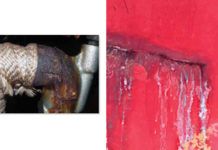
DIY Survey Checklist for Used-Boat Buying
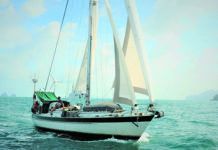
Valiant 40: Reshaping the Cruising Hull

Best Crimpers and Strippers for Fixing Marine Electrical Connectors

Thinking Through a Solar Power Installation

How Does the Gulf Stream Influence our Weather?

Can You Run a Marine Air-Conditioner on Battery Power?

Practical Sailor Classic: The Load on Your Rode

Anchor Rodes for Smaller Sailboats

Ground Tackle Inspection Tips

Shoe Goo II Excels for Quick Sail Repairs

Dinghy Outboard Diagnostics
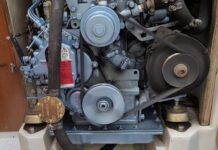
Spring Season Engine Start-Up for Winterized Engines

Solutions for a Stinky Holding Tank

Diesel Performance Additives

Vinyl Boat Lettering DIY Application and Repair

Those Extras you Don’t Need But Love to Have

Hidden Maintenance Problems: Part 3 – Gremlins in the Electrics

Three-Model BBQ Test

Alcohol Stoves— Swan Song or Rebirth?

Living Aboard with an Alcohol Stove

Preparing Yourself for Solo Sailing

How to Select Crew for a Passage or Delivery

Preparing A Boat to Sail Solo

Re-sealing the Seams on Waterproof Fabrics

Chafe Protection for Dock Lines

Waxing and Polishing Your Boat

Reducing Engine Room Noise

Tricks and Tips to Forming Do-it-yourself Rigging Terminals

Marine Toilet Maintenance Tips
- Marine Electronics
Tri-Lens Radar Reflector
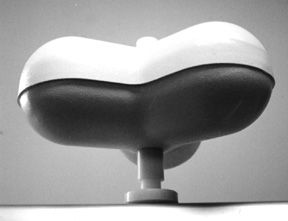
In the September 1995 issue, we reported results of radar reflector testing done at the Stanford Research Institute in Palo Alto, California. This was made possible thanks to Dick Honey, then a semi-retired senior principal scientist at SRI, uncle to former SRI research engineer, well-known navigator and sailor Stan Honey (also the guy who puts the yellow first-down band across the screen of your TV during pro football games). Stan also assisted, as did West Marines Chuck Hawley and a third member of this Bay Area brain trust, Jim Corenman.
Two Types Marine radar is of two types: X-band and S-band. The former is the type commonly carried aboard small boats. It operates at a frequency of about 9.4 GHz (9400 MHz) and has a wavelength of 3.2 centimeters (cm). S-band radar is used aboard large ships and operates at 3 GHz with a wavelength of 10 cm.
Ship operators generally use their X-band radar near shore because it has better resolution and can pick up smaller targets better than S-band, which is commonly preferred offshore due to its longer range and superior resistance to sea clutter.
Terms Radar reflectors are described in terms of their Radar Cross Selection (RCS) and their performance is measured in decibels (dB) relative to some reference, usually a 1m2 sphere (profile).
Tri-Lens Radar Reflector In our 1995 test, a recommended minimum average RCS of 2.5 m2 was adopted at the suggestion of GEC Marconi, maker of the Firdell Blipper reflector.
Radar reflector performance is a direct function of size, proportional to the fourth power of its linear size. Doubling a reflector’s size increases its effective area 16 times. In the 1995 report, we wrote: “As the smallest dimension of a reflector gets down to a few wavelengths of the radar signal, it quits acting as a reflector and starts to act as a lump of metal. Remember that a wavelength is 3.2 cm (1-1/4″) for X-band, and 10 cm (4″) for S-band. So, small reflectors must be looked at with a great deal of suspicion, as there really is no substitute for size.”
Besides strength of return, consistency also is critical. Many radar units are not continually monitored but set to automatically sound an alarm if a target registers three consecutive “hits.” One big hit wont alert the ship’s crew that a smaller vessel is in the vicinity.
Reflectors tested in the 1995 report included the octahedral Davis Echomaster and Emergency; the trihedral and dihedral-based Holland Yacht Equipment, Firdell Blipper, Mobri, High Gain Rotation and Cyclops; and the Luneburg lens-type Lensref. We also tested the Radar Flag, which was practically invisible.
1995 Results The top-performing reflector six years ago was the Davis Echomaster in the vertex up position with 0 heel, which registered 63% of returns above 2.5 m2. In the double-catch rain position and 20 heel, just 43% of returns were above 2.5 m2.
The Lensref has virtually no nulls; its polar plot is a virtual circle. Had the minimum average RCS been just 2.0 m2, the Lensref would have easily won with 100% of returns greater than the threshold. At 2.5 m2, however, just 30% of the returns exceeded the threshold. And this was at less than 18 heel, over which its performance fell off dramatically. A gimbaled mount was recommended.
The Tri-Lens Last year, we were contacted by Tim Rozendal of Rozendal Associates in Santee, California, asking us to test his new reflector. Tim said he has supplied more than 20,000 Luneburg lenses to the US Navy, Army, Air Force and Coast Guard. When he became interested in developing a product suitable for the recreational boating industry, he studied our 1995 SRI report and came up with two sizes of the Tri-Lens Radar Reflector. Due to computer problems at SRI, we were unable to have Rozendals Tri-Lens tested in the same anechoic chamber as the others. Instead, we directed Rozendal to Ohio State Universitys Electro Science Laboratory Compact Range. A copy of the 1995 report was supplied to OSU so that the same test protocol could be followed, and a Davis Echomaster was also tested as a control.
The Tri-Lens has a novel configuration of three modified Luneburg lens reflectors oriented about a vertical axis. It was measured only at X-band.
We asked Dick Honey to review the OSU report and interpret the data. In his summation to PS, he said the Tri-Lens shows “the uniform azimuthal response expected of Luneburg lenses, as well as the excellent tilt (heel) response expected from the design, i.e., each lens looks only into its 120 azimuthal sector so that the spherical reflector on the back of each lens can be quite large, with no aperture blocking as occurs with most single Luneburgs designed for 360 coverage. In other words there are very few narrow angular gaps in the coverage between each lens.”
At 0 heel, 90% of returns exceeded the 2.5 m2 threshold; at 20 heel 70% exceeded the threshold and at 25 heel 69%. The Tri-Lens easily outperformed all other reflectors in the 1995 test.
Honey nevertheless had criticism of the Tri-Lens.
“Our reservations,” he wrote, “are not with the angular coverage, but with the magnitude of the reflection. (This same reservation applies to virtually all passive radar reflectors on the market today!) The Rozendal reflectors use 5.25-inch diameter spheres inside a somewhat larger radome, the spheres being approximately 4.2 wavelengths across at X-band, but only 1.4 wavelengths across at S-band. This means that they may not be much better at scattering S-band radar signals back towards the radar than the average winch, and S-band may be the only radar in use on the high seas (if any).
“As mentioned in our earlier test, the radar cross-section (RCS) of similar reflectors increases as the fourth power of the size, so it would take a relatively small increase in the size of the Luneburg lens to bring the X-band RCS up to 10 square meters (m2) the minimum echoing area requirement in the latest International Standard (ISO 8729, Marine radar reflectors, sec. 5.1.1). That is, a perfect Luneburg lens 5.25 inches in diameter should have an RCS of about 2 m2 at X-band, but a lens only 40% larger or 7 inches in diameter should have an RCS of 10 m2. In addition, it would have a 2-wavelength diameter at S-band, where it might begin to reflect better than a winch. Unfortunately, this would add significantly to the weight of a Lens-based reflector, and weight is already a concern with these reflectors, relative to an octahedral reflector like a Davis Echomaster.
“Rozendal also offers a Mini-Lens reflector, which as expected given its small size, cannot compete with any reflector on the market except for the Mobri.
“Wouldnt it be great if a radar reflector could achieve an RCS of at least 10 m2 at X-band over 360 of azimuth with trivial nulls and wide tolerance for heel? Of course, it should be less than a foot in diameter, weigh little, and be ‘almost free,’ as they say in Mexico.”
In response to these criticisms, Rozendal agrees that the Mini Tri-Lens “does not perform well using the 2.5 m2 threshold.” The Mini Tri-Lens, he says, was “intended for small boats and coastal sailing. It should be mounted as high as possible, preferably on top of the mast. The mini Tri-Lens does not have a large RCS but gives a consistent return. It has three narrow dead spots. The Mobri has 16 dead spots and any octahedral will have eight dead spots. A premium must not only be put on RCS but on the consistency of the return as well. Anything that will help improve a vessel’s radar visibility is worthwhile, particularly shorthanded vessels and those without radar.”
The International Standard for Marine Radar Reflectors (ISO 8729) was revised in 1997 and came two years after our 1995 test. In addition to the section 5.1.1 noted above, there are other relevant sections. 5.1.2 requires that a reflector’s azimuthal polar diagram “shall be such that its response over a total of 240 is not less than 2.5 m2. The response shall not remain below this level over any single angle of more than 10.”
And section 5.2 states, “The performance of the reflector up to at least +/- 15 from the horizontal (the degree of heel) shall be such that its response at any inclination remains above .625 m2 over a total angle of 240.”
Rozendal asserts that “This specification was written around the performance spec of the largest Cyclops unit (it weighs approx. 22 lbs.). They claim their unit is the only passive reflector that meets ISO 8729. No aluminum octahedral reflector is technically able to meet this specification. The Tri-Lens exceeds this specification.”
The standard Tri-Lens measures about 12″ across, is 6″ high, and weighs about 5.5 lbs. It sells for $219 and the Mini version for $129. West Marine now carries them. Price includes a Mast Mount Bracket and a coupler that can be adapted to any marine antenna mount.
As for Honey’s wish for a 10 m2 RCS/360 reflector, Rozendal said he does make a large Tri-Lens using 8″ diameter lenses. It has a RCS of 10 m2 for 300 and minimal degradation when in elevation. It weighs around 15 lbs. and sells for $699.
While bigger is better when it comes to radar reflectors, there are practical limits aboard small boats. Installing a radar unit may be a skipper’s best defense against collision at sea-the idea being that the best safeguard is for you to see the other guy rather than hoping he sees you-but not everyone wants or can afford a radar set. And even then, hanging a relatively inexpensive passive reflector certainly doesn’t hurt.
Compared to the high cost of the Lensref (about $425), the Tri-Lens is a bargain. It costs more than the Davis Echomaster ($60), but outperforms it. If you’re in the market for a passive radar reflector, we recommend the Tri-Lens ( www.tri-lens.com ).
Contact- Rozendal Associates, Inc., 9530 Pathway St., Santee, CA 92071; 619/562-5596
Also With This Article Click here to view “Ranking of Reflectors.”
RELATED ARTICLES MORE FROM AUTHOR
Leave a reply cancel reply.
Log in to leave a comment
Latest Videos

Removing Vinyl Stickers From A Boat

Hanse 410: What You Should Know | Boat Tour

Sailboat vs Fishing Boat – Rules of the Road

Catalina 445: What You Should Know | Boat Review
- Privacy Policy
- Do Not Sell My Personal Information
- Online Account Activation
- Privacy Manager
Yachting Monthly
- Digital edition
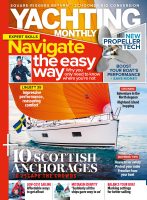
Updated guidance on fitting a radar reflector to boats under 15m
- Katy Stickland
- November 15, 2022
The Maritime and Coastguard Agency has updated its guidance and is urging all owners of boats under 15m/49.2ft to fit a radar reflector

All boats less than 15m/49.2ft and under 150 gross tonnage should permanently carry a radar reflector. according to the Maritime and Coastguard Agency. Credit: Graham Snook/Yachting Monthly
The Maritime and Coastguard Agency (MCA) has updated its guidance on the use of a radar reflector on boats less than 15m/49.2ft and under 150 gross tonnage.
Marine Guidance Notice (MGN) 349 states that a radar reflector or radar target enhancer should be permanently installed, and offer the largest radar cross section (RCS) as practical for the vessel.
Commercial ships use radar equipment that operates in the ‘X’ band (9GHz) and the ‘S’ band (3GHz).
A radar reflector on a recreational boat should have a RCS of at least 7.5m² at X-Band and 0.5m² at S-band when mounted at a minimum height of four metres above sea level.

Just because you have a radar reflector, doesn’t mean you will be seen. Always keep a proper lookout, advises the MCA. Credit: Graham Snook/Yachting Monthly
The RCS should be maintained over a total angle of at least 280° of azimuth and not below this level over any angles greater than 10° (a null).
There should not be a distance of less than 20° between nulls.
For power driven vessels and sailing vessels designed to operate with little heel, such as a catamaran or trimaran, this performance should be maintained through angles of (athwartships) heel 10° either side of vertical.
For other vessels, the radar reflector should maintain this performance over 20° either side of vertical. Any radar reflector meeting the above requirements should comply with ISO 8729-1:2010.
If the radar reflector meeting these standards are unsuitable for boats under 15m LOA, then owners are recommended to fit a radar reflector to the older standard EN ISO 8729:1998, which has been retained for type approval under the Marine Equipment Regulations (MSN 1874) for radar reflectors for lifeboats and rescue boats.
It should be noted that Echomax has emailed Yachting Monthly to say it has contacted the MCA to express concern over their mention of ISO 8729-1:2010, as currently, there are no known passive radar reflectors which meet ISO 8729-1:2010 which has a volume limit of 0.5m3 and weight limit of 5kg.
In response, the MCA said:
‘The notice will not be amended as it can’t be confirmed 100% that there are no products of this type currently on the market, but it is highly likely during our research that this is the case.
In reference to 3.1.3 of the amended MGN:
‘3.1.3 However the above standard results in a large reflector that may be unsuitable for vessels under 15m overall length, in which case Owners and skippers of craft less than 15m overall length are recommended to consider fitting a radar reflector to the older standard EN ISO 8729:1998, which has been retained for type approval under the Marine Equipment Regulations (MSN 1874) for radar reflectors for lifeboats & rescue boats.’
EN ISO 8729:1998 remains in force until a product is placed on the market approved to ISO 8729:1.’
Continues below…
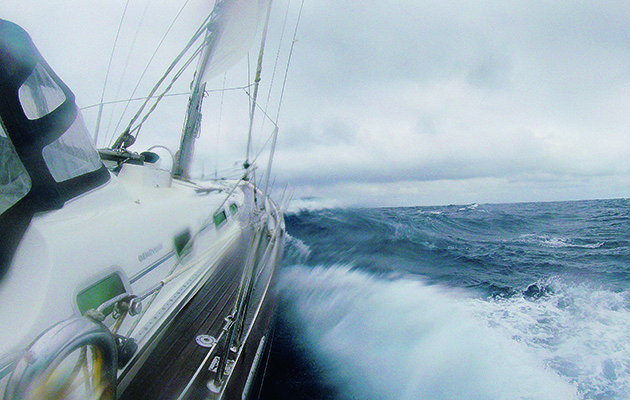
AIS vs radar: Do you really need both?
AIS and chartplotters have come a long way in the last decade, but are they enough to replace radar? Jonty…


Yacht Radar: How to find your way in any weather
To the uninitiated, radar can seem like a dark art. The splurge of blobs would look more at home in…

Expert advice: boat navigation
Good seamanship starts with excellent navigation skills. Yachting Monthly experts share their top tips for a smooth passage

Why a yacht makes the best liferaft
A liferaft is reassuring, but only to be used as an absolute last resort. James Stevens explores the main scenarios…
The MCA is also advising skippers that in certain circumstances, their boat may still not be readily visible on ships’ radars, even when fitted with a radar reflector or a radar target enhancer, and that this does not replace the need for a proper lookout at all times.
MGN 349 was initially published following the deaths of three sailors aboard the Sailfish 25, Ouzo overnight on 20-21 August 2006.
Rupert Saunders, 36, Jason Downer, 35, and James Meaby, 36, all died when their yacht was sunk six miles south of St Catherine’s Point on the Isle of Wight after a collision with the P&O ro-ro ferry Pride of Bilbao .

Radar reflectors should be mounted at a minimum height of four metres above sea level. Credit: Graham Snook/Yachting Monthly
A report by the Marine Accident Investigation Branch ( MAIB ) found that Ouzo had not shown up on the ferry’s radars and the bridge team on Pride of Bilbao had not seen the yacht until is was very close ahead.
The officer on watch made a last minute manoeuvre to avoid Ouzo and believed he had been successful, although he did not contact the yacht crew to confirm this, and instead relied on seeing, what he thought, was the yacht’s stern light.
The MAIB concluded that the Pride of Bilbao had collided with Ouzo , or passed so close that the yacht had been swamped or capsized by the ferry’s wash. The yacht was never recovered.
The MAIB did commission a report by QinetiQ to carry out research into a number of common types of radar reflectors to compare performance with International Standards (ISO 8729).
The recommendations included:
- Using a Sea-Me radar reflector where power is available;
- Making sure the RCS of the radar reflector was a minimum of 2 m²
- Not using a 4” or 2” tube reflector due to its poor performance.
Details of MGN 349 can be found here.
Details of the full MAIB report into the sinking of Ouzo and the QinetiQ Radar Reflector report can be found here.
Please note this article was updated on 23 November 2022 after YM was contacted by Echomax about the updated MGN 349 guidance, to inform us that there are currently no known passive radar reflectors which meet ISO 8729-1 which has a limit of 0.5m3 and 5kg.
Enjoyed reading Updated guidance on fitting a radar reflector to boats under 15m?
A subscription to Yachting Monthly magazine costs around 40% less than the cover price .
Print and digital editions are available through Magazines Direct – where you can also find the latest deals .
YM is packed with information to help you get the most from your time on the water.
- Take your seamanship to the next level with tips, advice and skills from our experts
- Impartial in-depth reviews of the latest yachts and equipment
- Cruising guides to help you reach those dream destinations
Follow us on Facebook , Twitter and Instagram.
- MarketPlace
- Digital Archives
- Order A Copy

Radar reflector performance
Because sailboats are notoriously poor radar targets, many sailors purchase a passive radar target enhancer (RTE), or radar reflector, to improve the vessel’s signature. How effective are these devices? For my recent book Radar Reflectors for Cruising Sailboats, I developed a method for describing and comparing RTEs. We’ll use it here to compare a few of the common passive radar reflectors on the market.
The strength of the radar signal reflected by a target is related to the radar cross section, or RCS. A larger RCS means the target will be detected at greater range, by lower power radar sets, in poorer weather conditions and more consistently. Consistent detection is especially desirable for collision avoidance because your vessel may be missed by a human operator and it may be ignored by automatic radar plotting aid software.
Radar reflectors cannot be completely described by a single RCS value. Rather, the RCS depends on the orientation of the radar reflector relative to the radar that is painting it. The orientation, or aspect, is simply the relative bearing of the radar from your vessel and the elevation angle of the line of sight to the radar relative to your deck. For a radar dead abeam, the elevation angle is your vessel’s angle of heel; for a radar dead ahead or astern, the elevation angle is your vessel’s pitch angle. A complete characterization of a radar reflector includes the RCS at all bearing angles, or azimuths from 0° to 360° and all elevations angles from -90° to +90° – although a smaller range of elevation usually is adequate.
Polar diagram
Radar cross section is commonly presented in a polar diagram. To obtain polar diagram data, the target is mounted on a rotating platform in an indoor radar range (radar anechoic chamber). A carefully calibrated radar system records the strength of the reflected signal as the platform rotates through 360° and graphs RCS against azimuth.
A polar diagram describes the RTE as long as it is vertical (elevation is zero). It does not represent performance if the RTE is tilted away from the vertical, as would be the case if the RTE is mounted on a vessel that is rolling or pitching in a seaway or simply sailing at a constant angle of heel. Consequently, single polar diagrams do not provide enough information to compare radar reflectors that are to be used on sailboats. Manufacturers sometimes provide several polar diagrams for different tilt angles, but this is not common practice and, even when the data are available, it is not easy to visualize performance given multiple polar diagrams.
Analytic RCS diagram The data visualization problem may be overcome by a single quantized, color-coded RCS diagram showing the data from many polar plots. Such a diagram is easier to interpret than multiple individual polar plots, but obtaining enough anechoic chamber data to produce a detailed diagram is costly and time consuming. My solution was to develop analytic models of all common RTE, calculate RCS over the entire range of aspect, and present the results in a color-coded analytic RCS diagram. An analytic approach is possible because all RTE are made of a few basic elements that have been analyzed and described thoroughly in the technical literature. Basic elements can be combined analytically to represent any RTE if the physical structure is known. The color-coded diagram allows one to visualize RCS over a large range of aspect and compare RTE with a common display. Included here is the analytic RCS diagram for a Davis EchoMaster 121/2-inch octahedral, mounted in the normal orientation. RCS magnitude is quantized so only six colors are needed. I have used green to indicate an RCS greater than 10 m2, yellow between 5 and 10, dark blue between 2.5 and 5, light blue between 1.25 and 2.5, purple between 0.625 and 1.25, and red less than 0.625 m2. The 2:1 spacing of contours allows six colors to cover a large range of RCS. Essentially, green is good. RCS decreases progressing from yellow to purple, and red means you probably won’t be detected. Examining the diagram, the major feature is the eight circular areas of green, yellow and dark blue centered at about 35� elevation. These correspond to the eight corner cube pockets that are the main element of the octahedral. The narrow vertical and horizontal green areas come into play at certain aspects. This diagram is interpreted as follows. The main response consists of eight cones oriented about 35� above and below horizontal. There is good response at very small elevation angles, roughly �4�, but even at zero elevation, there are small ranges of azimuth for which the response is red. Consequently, this RTE would be marginally useful as long as the vessel on which it is mounted does not heel more than 4�, or heels about 35�. For heel angles between a few degrees and about 20� there is a lot of red. You would present a very small RCS to the radar, and you probably would not be detected at most azimuth angles. There is more red than green or blue over the range of aspect encountered by monohull sailboats, so the octahedral, in normal orientation, may not be the best choice. On the other hand, there is a lot of green and blue for elevation angles less than 4� so this would not be a bad choice for a vessel that does not tilt much. RCS is not the only criterion for selecting an RTE. Cost, mounting, weight and windage aloft, power consumption, and reliability also are important, as is the application, i.e., collision avoidance, search and rescue, fixed navigation aids. Even the type of vessel and expected sailing conditions are important for collision avoidance because of different ranges of heel angle. However, the analytic RCS diagram succinctly summarizes the variation of RCS with aspect and enables one to compare RTE on a common basis.
By Ocean Navigator
Receive News, product promotions & gifts

Your cart is empty
Use this bar to show information about your cookie policy.

Davis Echomaster Radar Reflector
- Description
Echomaster™ Radar Reflector
Give ships a chance to see you in fog and low visibility. This model provides 12 square meters of radar cross section. Ranked on of the best radar reflectors and rated superior by SRI after the most rigorous tests ever conducted on radar reflectors - some costing 10 times as much.
All our Echomaster models can be stored flat and assembled in minutes. The plates are made of sturdy, stamped 0.05 in. (1.3 mm) thick aluminum with riveted nylon corner latches for quick assembly or disassembly. Install around a backstay or make your own hanging bridle as described in the 16-page Radar Reflector Booklet included with Echomaster.
You may also like
Recently viewed, get in touch, helpful information, stay connected.
Sign up for monthly news and promotions
Affiliates & Dealers
Store location.
Salt Creek Marina 107 15th ave SE St Petersburg, Fl, 33701

- Opens in a new window.
- Anchoring & Mooring
- Boat Anatomy
- Boat Culture
- Boat Equipment
- Boat Safety
- Sailing Techniques
Marine Radar Reflectors for Your Boat
As boating becomes increasingly popular, radar reflectors have emerged as an essential element of marine safety. These reflectors enhance the visibility of small boats, allowing larger ships to detect them via radar navigation and collision avoidance systems.
This article will explore SOLAS Chapter V Regulation 19.2.1.7 and the MCA’s guidance on radar reflectors for small vessels. We’ll also discuss the different types of reflectors, their performance factors, and the importance of proper installation and maintenance.
Key Takeaways
- Radar reflectors are essential for enhancing small boat visibility on radar systems.
- Different types of radar reflectors are available, including passive and active models.
- Choosing the right radar reflector depends on factors like size, shape, and mounting options.
- Compliance with SOLAS and MCA guidance is crucial when selecting a radar reflector.
Principles of Radar Technology
Radar (short for radio detection and ranging) is a system that uses radio waves to detect and locate objects. The equipment transmits radio waves using a transmitter and then detects their reflections as they bounce off objects.
By measuring the time it takes for the radio waves to return and the direction they come from, the radar system can determine the distance, direction, and sometimes the speed of the detected objects.
Different Types of Radar Systems
Several types of radar systems are commonly used:
Pulse Radar : This type of radar sends out short bursts of radio waves, called pulses, and listens for the returning echoes. Pulse radar is widely used for navigation, collision avoidance, and weather detection.
Continuous Wave Radar : This radar system emits a continuous radio wave and measures the frequency shift of the returned signal to determine the speed and distance of detected objects.
Frequency-Modulated Continuous-Wave Radar : This system is similar to continuous wave radar but changes the frequency of the emitted wave over time. This allows the radar to determine both distance and speed more accurately.
Role of Reflection in Radar Detection
Reflection is a crucial aspect of radar technology. When radio waves encounter an object, some waves are reflected to the radar system. The reflection’s strength and quality depend on the object’s size, shape, and material. Certain materials, like metals, reflect radio waves more effectively than others.
In a marine context, radar reflectors help make your boat visible on other vessels’ radar systems.
Choosing a Radar Reflector
Radar reflectors increase your boat’s presence on radar by reflecting radio waves more effectively. This is especially important for smaller boats made of materials that don’t naturally reflect radar waves well, like fiberglass or wood. Utilizing one increases the likelihood of other craft detecting your boat, reducing the risk of an accident.
Types of Radar Reflectors
There are two main categories:
Passive : These don’t require power and work by reflecting incoming radio waves to the source. There are several common designs:
a. Corner Reflectors : Typically triangular, corner reflectors are made of three flat metal surfaces joined at 90-degree angles. They are effective but can be bulky.
b. Octahedral Reflectors : Also called “radar balls,” these reflectors consist of eight triangular metal plates forming octahedrons. They provide good radar reflection and are more compact than corner reflectors.
c. Spherical Reflectors : These round reflectors are made of many small, flat metal surfaces arranged in a sphere. They are less effective than the other designs but have a low-profile appearance.
Active : These reflectors require power and amplify and retransmit incoming radar signals. They provide a stronger reflection than passive reflectors but may require maintenance and a power source.
Materials Used in Radar Reflectors
Radar reflectors are typically made from metal, plastic, or composite materials. Metal reflectors offer the best radar reflection but can be heavy and prone to corrosion. Plastic and composite reflectors are lightweight and corrosion-resistant but may not provide the same level of radar reflection as their metal counterparts.
Radar Detection and Boat Construction Materials
The effectiveness of radar detection can be influenced by the construction materials used in building a boat. Different materials can have varying degrees of radar reflectivity, affecting how well a radar reflector performs. Here’s a brief overview of how common boat construction materials can impact radar detection:
Fiberglass: Fiberglass boats generally have low radar reflectivity. Since fiberglass is a non-metallic material, it does not naturally reflect radar waves well. Installing a radar reflector is particularly important for fiberglass boats.
Aluminum and Steel: Metal boats, such as those made of aluminum or steel, have better natural radar reflectivity due to their metallic composition. However, radar signals may be scattered or absorbed by various boat parts, leading to inconsistent radar returns. Installing a radar reflector can help enhance radar presence by providing a more consistent and stronger radar return.
Wood: Wooden boats can have varying radar reflectivity depending on the type and density of the wood used. Wooden boats may generally have better radar visibility than fiberglass boats but may still benefit from fitting a radar reflector to improve their radar signature.
Selecting the Right Radar Reflector
When choosing a radar reflector for your motor or sailboat, consider the following factors:
Size and Shape : Choose a radar reflector that balances size and effectiveness based on your boat’s size and material. Although larger reflectors provide better reflection, they may be more challenging to install or store.
Placement and Height Above Waterline : Mount the radar reflector as high as possible above the waterline to improve visibility. Avoid placing the reflector behind obstructions that could block the radar signal.
Mounting Options : Select a reflector with a mounting system that suits your boat’s configuration. Some reflectors can be mounted on the mast, while others can be attached to railings or other structures.
Regulations and Recommendations : Be aware of any local regulations or recommendations regarding radar reflectors for your type of boat.
Radar Reflectors: Performance Standards and Trial Results
Marine radars use the X band (9410 MHz ± 30 MHz) and the S-band (3050 MHz ± 30 MHz). X-band radars can be affected by sea or rain clutter, while S-band radar ensures better target detection in adverse weather. Recreational boaters can now use Radar Target Enhancers (RTE) that work effectively in both bands.
Radar reflectors must comply with ISO test standards, specifically ISO 8729-2:2009 (Active) and ISO 8729-1:2010 (Passive). Passive radar reflectors built to these standards are often too large for smaller vessels.
The MCA has issued guidance suggesting that vessels over 15m use radar reflectors that comply with the standard. In comparison, those under 15m should use a reflector with the largest echoing area feasible.
Several recent trials and reports evaluated the effectiveness of radar reflectors for recreational boats, revealing that some designs perform just as poorly as having no reflector at all. Even popular models may not meet the expected performance standards.
Radar Reflectors and Small Craft
The loss of the yacht ‘Ouzo’ and her crew highlighted the significance of radar reflectors for small vessels. To improve the detectability of small boats on radar, the International Maritime Organization’s (IMO) Safety of Life at Sea Convention, 1974 (SOLAS) Chapter V Regulation 19.2.1.7 mandates that ships weighing less than 150 gross tonnage have a radar reflector or other detectable means for vessels navigating using radar, if practicable, at 9 and 3 GHz.
Small craft owners and skippers are advised to select the most effective and appropriate radar reflector or Radar Target Enhancer (RTE) for their situation, ensuring they comply with international standards. The Maritime and Coastguard Agency (MCA) offers detailed guidance on radar reflector selection, installation, and recommendations in MGN 349 (M+F) Amendment 1 .
Testing Your Radar Reflector
Testing your radar reflector is crucial to confirm that it’s performing as intended. Poorly functioning reflectors can cause you to be overlooked by other ships, heightening the risk of accidents and potentially compromising safety.
There are a couple of ways to test the effectiveness:
On-Water Testing : One of the most practical ways to test your radar reflector is on the water. Ask a friend with radar to help you. Move your boat to a reasonable distance from them and check how well your boat appears on its radar screen. Try different distances and angles.
Comparing Reflectors : If you can evaluate multiple reflective models, comparing them while on the water is best. Replace each reflector and note any differences in readings between them.
Understanding Radar Cross-Section (RCS) and Its Relevance to Boat Owners
The Radar Cross-Section (RCS) measures how effectively an object reflects radar waves to the source. A higher RCS means better radar visibility, making your boat easier to detect. Manufacturers may provide RCS values for their radar reflectors, which can help you compare different products. Remember that real-world performance can be influenced by installation and environmental conditions.
Integrating Radar Reflectors with Other Safety Measures
While radar reflectors are important in enhancing your boat’s visibility on radar systems, they should be integrated with other safety measures to ensure comprehensive protection.
Radar reflectors are just one piece of the safety puzzle. To maximize your boat’s safety, consider implementing the following additional measures:
Navigation Lights : Ensure your boat has proper navigation lights for low light and poor conditions, such as nighttime or foggy weather.
VHF Radio: Maintain a reliable VHF radio onboard to communicate with other craft, receive weather updates, and call for assistance if necessary.
Life Jackets and Personal Flotation Devices (PFDs): Equip your boat with an appropriate number of life jackets and PFDs for all passengers.
Sound Signaling Devices : Carry sound signaling devices, like horns or whistles, to communicate with other boats.
AIS : AIS, or Automatic Identification System, is a technological system that enables data exchange between vessels on the open seas. It allows boats to detect each other’s positions, course, and speed and helps to avoid collisions by alerting them to possible dangers .
Navigating Safely in Areas with High Radar Traffic
When boating in areas with high radar traffic, such as busy harbors or shipping lanes, it’s essential to stay vigilant and follow these safety tips:
Monitor Your Radar : Regularly check your radar system to stay aware of nearby vessels and obstacles.
Use Your AIS : Ensure your AIS functions correctly to broadcast your boat’s information to others in the area.
Operate a Watch : Always maintain a proper lookout, using visual and auditory methods, to stay aware of your surroundings.
Follow Local Regulations : Follow local boating rules and guidelines, including speed limits, navigation channels, and restricted areas.
Properly selecting, installing, and maintaining radar reflectors are crucial for small vessels navigating busy waterways and challenging weather conditions. By enhancing their visibility to other ships, radar reflectors significantly contribute to maritime safety and collision avoidance.
It is essential for recreational boaters and other small vessel operators to be aware of the requirements and recommendations set forth by SOLAS and the MCA and to choose the most suitable radar reflector or radar target enhancer for their specific circumstances.
However, it is essential to remember that radar reflectors should not replace the need to operate a watch and navigate cautiously. By combining effective radar reflectors with safe navigation practices, small vessel operators can significantly reduce the risk of an accident and enhance sea safety.
A radar reflector is a device that enhances a boat’s visibility on other vessels’ radar systems by reflecting radio waves more effectively.
Radar reflectors are crucial for small boats because they make the boat more visible on radar systems, reducing the risk of collisions and accidents.
There are two main types: passive (corner, octahedral, and spherical) and active radar reflectors.
Consider factors like size, shape, placement, mounting options, and local regulations when selecting a radar reflector.
Galvanized vs Stainless Steel Anchor Chain
Sail trim: speed, stability, and performance, related posts, what should you do first if your boat runs aground, navigation: boat lights at night, handling lightning strikes on boats, leave a reply cancel reply.
Your email address will not be published. Required fields are marked *
- Cookie Policy
- Privacy Statement
© 2023 TIGERLILY GROUP LTD, 27 Old Gloucester Street, London, WC1N 3AX, UK. Registered Company in England & Wales. Company No. 14743614
Welcome Back!
Login to your account below
Remember Me
Retrieve your password
Please enter your username or email address to reset your password.
Add New Playlist
- Select Visibility - Public Private
- Datenschutz

- Inland Waterway Buoy BET-1010 PE
- Inland Waterway Buoy B7
- Spar Buoy PAS-630
- Data Buoy SB-138PD
- Marker Buoy Julius MB120
- Trawl Float SK200 and SK280
- UAL-2-12VDC
- UAL-1-230VAC white
- UAL-1-230VAC yellow
- Julux 200 LED
- H 100 und H 102
- Solar Compact Unit Till
- SRT Chronos
- Beacons with top marks
- Mooring Hardware Chain, Shackles and Swivels
- Lamp Changer S-2086
- Flasher 9020-03
- Radar Reflector SR6
- Windsock Fiete
- Connection Cable Beeke
For stationary and floating marine aids to navigation for marking coastlines, moorings or fixed obstacles
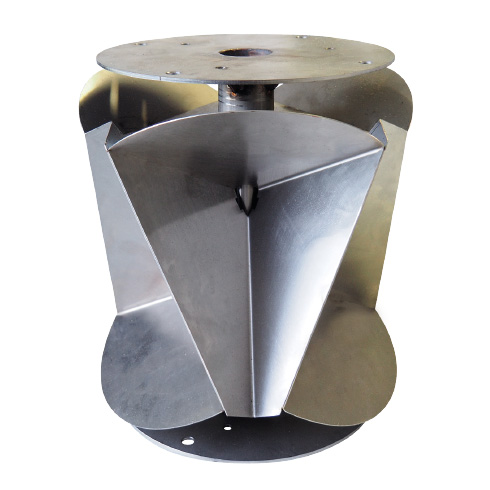
The radar reflector type SR6 is a passive radar reflector for use on buoys and beacons. Special features of this radar reflector are its 6-corner reflector plates in speckle design with optimised reflection properties.
The backscatter pattern is almost omnidirectional, not only in the horizontal axis from 0 ° to 360 °, but also in the vertical axis with a reflection angle of ± 30 °. This property is particularly important for good radar efficiency, which must be guaranteed regardless of the heeling of a buoy at sea.
The radar reflector is available in different sizes, which differ in diameter and height and thus have an influence on the radar reflecting surface. Depending on the design, it can be mounted between the lantern and its support plate or integrated into the structure of the buoy.
• 6-corner reflector plates • speckle design • radar area from 40 m 2 to 1200 m 2 • stainless steel
Download datasheet »
Download catalogue »

11 radar reflectors tested : Not all models are really easy to see
Alexander Worms
· 14.05.2023
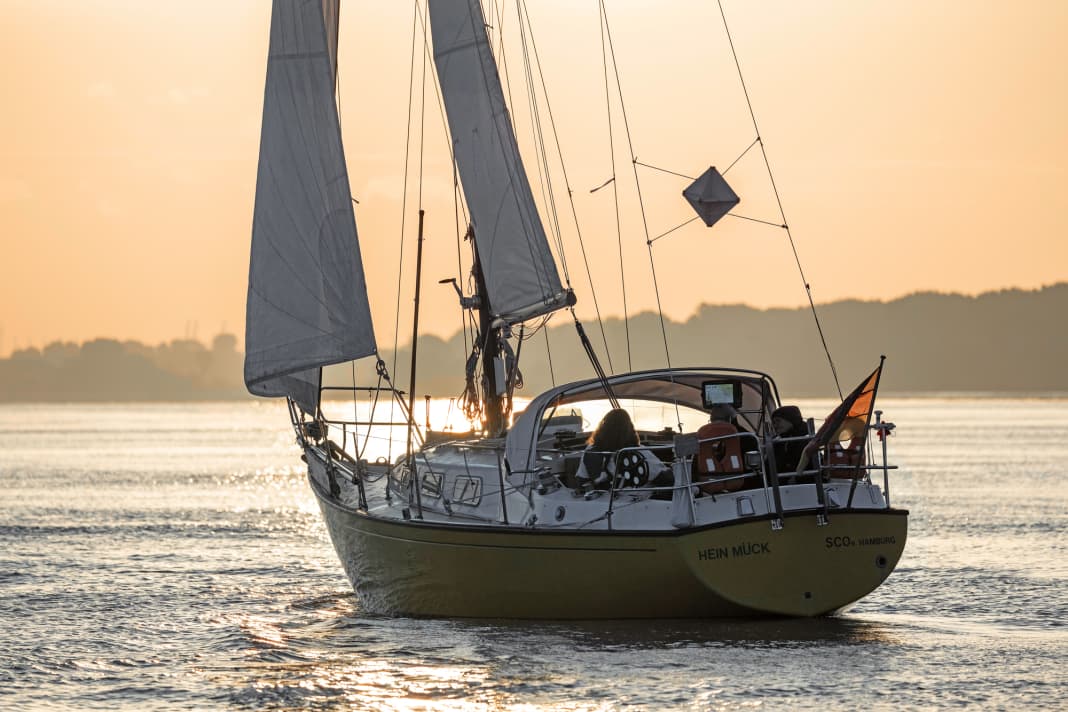
This is how we tested
11 radar reflectors in the test: the results, how radar reflectors work, radar technology: broadband or magnetron radar.
Who needs a passive radar reflector in the age of AIS? Thanks to modern electronics, you are highly visible on the screens, certainly on those of commercial shipping. Well, the question seems justified at first glance. On closer inspection, however, the answer is clear: everyone who is on the water with commercial shipping needs such a device. This is because AIS technology is dependent on a power supply - if this fails, the yacht is no longer visible. Passive radar reflectors work at all times. What's more, there are some areas, such as the Waddenzee in the Netherlands, where a radar reflector is simply mandatory.
Not much has changed in terms of products in recent years. On the market, the Tin cube which Tubes and the Echomax . There was also a device called Trilens. This reflector is now sold under the name 3Lenzz offered again.
But how good is the performance of the reflectors in practice and when it is not a question of being seen by large devices on the bridge of a commercial vessel, but by a less powerful yacht radar? First of all, it is difficult to make generalisations and the conclusions must be formulated precisely.
Most read articles
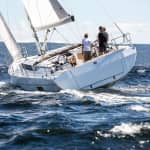
The problem is explained using an example: the 3Lenzz consists of three spheres that are mounted at an angle of 120 degrees to each other. A test by the British coastguard had already shown that it has a blind spot every 120 degrees. If radar signals hit this blind spot, the echo on the screen disappears. All reflectors have such blind spots, to a greater or lesser extent. During our test, we recognised the 3Lenzz by the fact that the echo was clearly visible, disappeared for a few orbits and then reappeared. The test boat was obviously close to a blind spot on the reflector. In practice, this would be the case when approaching with an exact bearing, for example when a ship is travelling towards an anchor berth that is not swinging. However, if the angle between the two changes by just a few degrees, there is an echo.
The conclusion that it doesn't work well because it was sometimes poorly visible in the test would not be the whole truth. The echoes were clear when measured from a different position. The conclusion is therefore that the 3Lenzz delivers good results with changing courses of approach and only shows weaknesses at three points on the full circle.
To simulate the situation on a sailing boat, we measured each reflector vertically and at an angle of 30 degrees. Here, too, some models showed weaknesses. In particular, the models with an already small reflective surface sometimes collapsed significantly. However, even the weakest reflector ensured that our test pontoon appeared on the radar screen.
The echo of each reflector was measured a total of eight times - from a distance of 0.5 and 1.5 nautical miles, vertically and at an angle of 30 degrees, using a modern broadband radar and a conventional magnetron radar. The displays of the broadband radars are shown in the individual test images. Measurements were taken from a motorboat on which both antennas were installed. The reflectors were installed at a height of around three metres on a pontoon on a wooden mast, which could also be tilted. The results were then saved using a screenshot on the Garmin devices used; these were radars commonly used on yachts. We optimised the settings of the radar unit for the medium-sized sheet metal reflector and did not change them in the further course of the test in order to ensure the same conditions for all reflectors. We only tested the two inflatable reflectors in an upright position, as these are usually suspended.
Plastimo sheet metal small
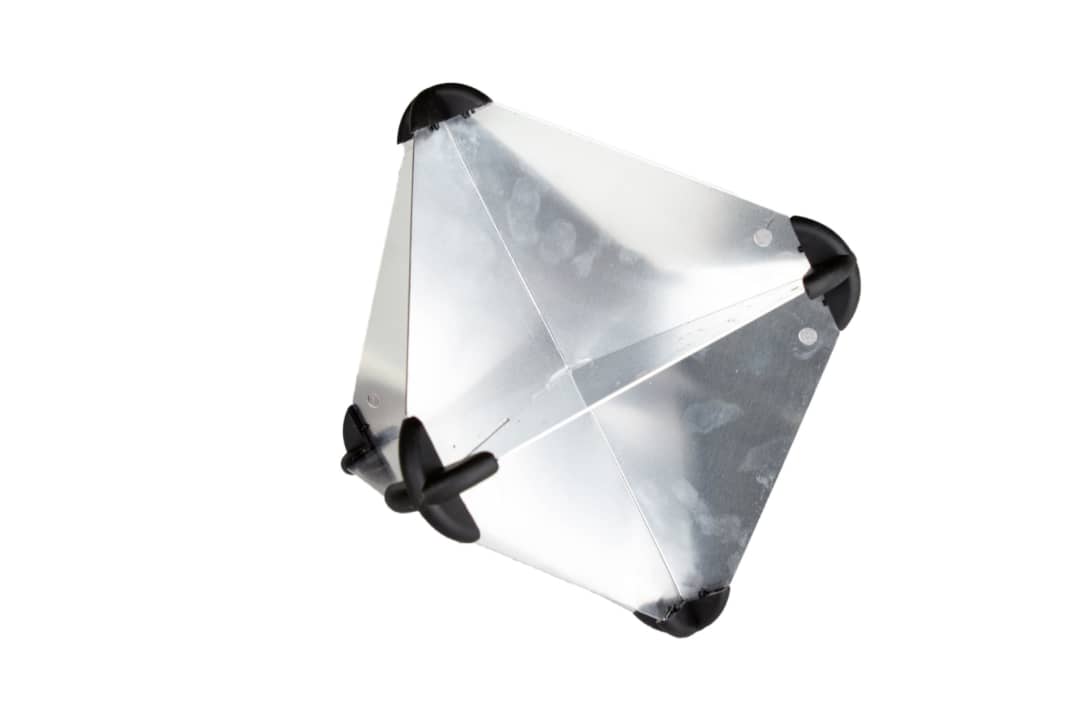
At close range, it is always easily recognisable on both devices. At greater distances, it is not visible in a vertical position; echoes only became visible when the mast was tilted. For an optimum echo, the reflector must be mounted in the rain catcher position, but this can only be the case either in an upright or tilted (in the test) position. Mounting is difficult, the metal sheets are sharp-edged.
- Weight: 0.45 kg
- Reflective surface, total: 3.0 m²
- Price: 33,92 €
- Distribution: Bukh Bremen
- Dimensions: 215 x 215 x 280 mm
- Rating: ***
Plastimo sheet metal RORC

The big brother is consistently easier to recognise on both devices at close range. From a greater distance, the solid-state radar struggles with reproduction. On the radar, the reflector cannot be seen in an upright position; when the boat is heeled over, it blends in with the tug echo. The reflector is very large. There is no opening on the inside to feed a stage through; the installation of the reflector on a sailing boat is unclear.
- Weight: 1.0 kg
- Reflective surface, total: 7.0 m²
- Price: 52,48 €
- Dimensions: 340 x 340 x 470 mm
Echomax EM 12
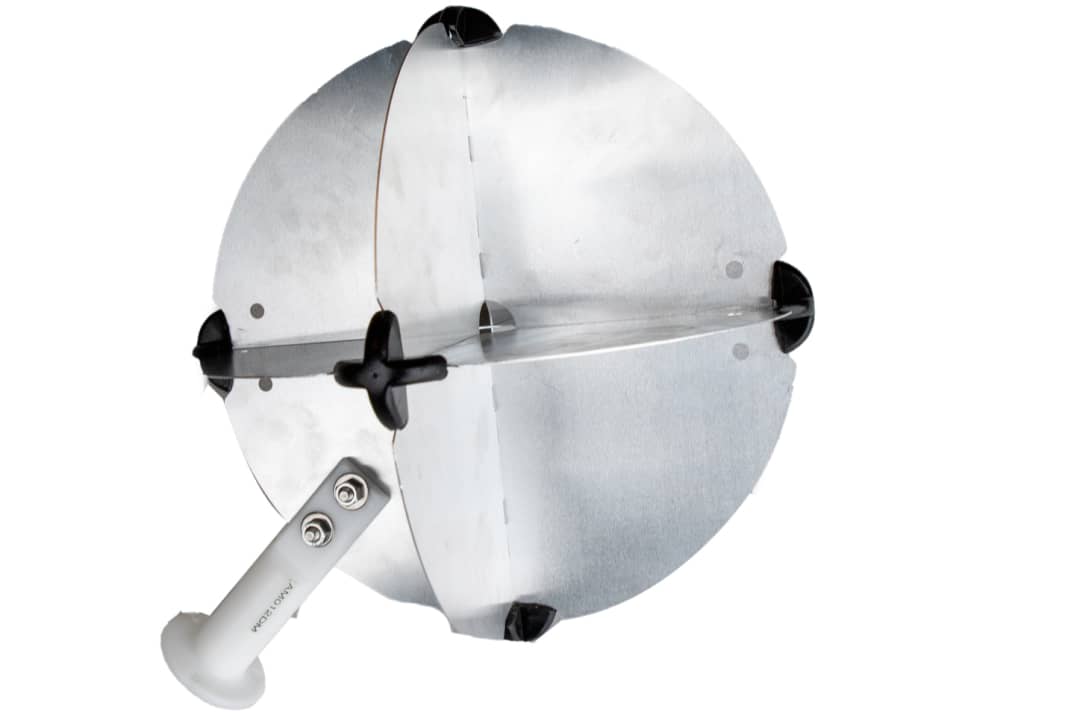
Good visibility at both distances. A rather weak echo when measured upright on the magnetron radar. At the greater distance, the reflector also clearly stands out from the echo of the tug. Mounting is easy, a foot helps with mounting on the spreader, for example. A spherical cut-out in the centre makes mounting on the stay easier as it can be threaded through. The plates are not sharp-edged.
- Weight: 0.73 kg
- Reflective surface, total: 5.5 m²
- Price: 80,50 €
- Distribution: Lindemann KG
- Dimensions: 360 mm
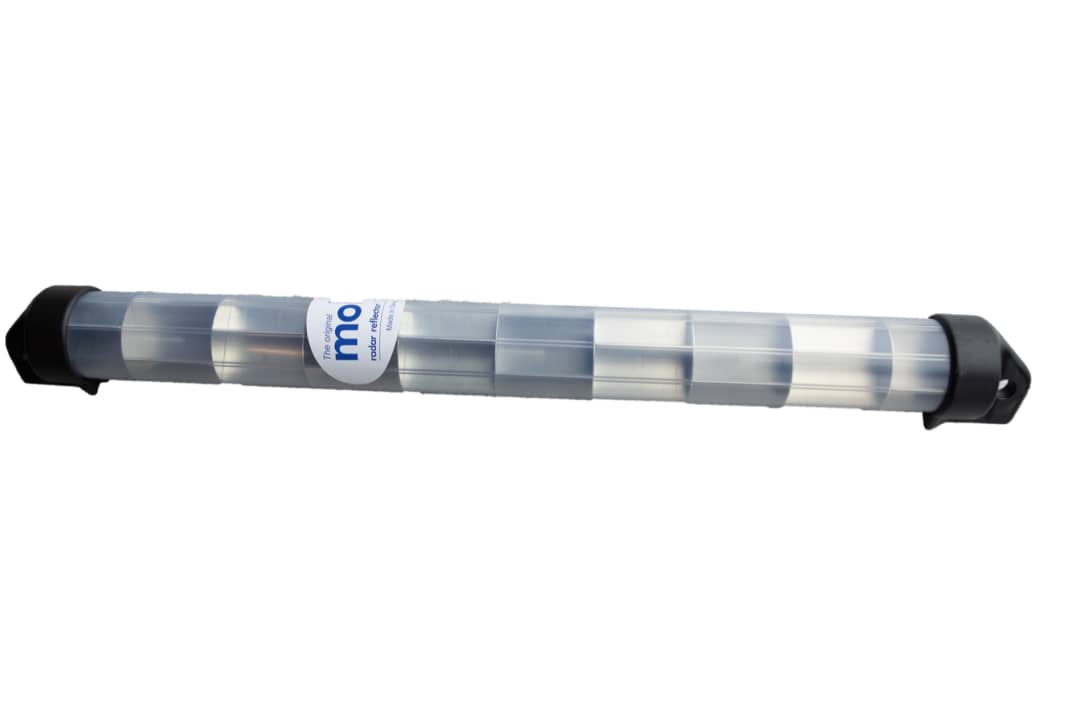
The rod is only visible as an echo from a short distance, but it is always equally good, regardless of whether it is vertical or inclined. At greater distances, it is invisible on the semiconductor radar. Only the magnetron radar can detect an echo in a vertical position. The reflector is lightweight and easy to install. However, it is more expensive than the similarly performing Plastimo tube. A base for mounting on deck is available.
- Weight: 0.38 kg
- Reflective surface, total: 2.0 m²
- Price: 49 € (as of 8/2022)
- Distribution: Lankhorst Hohorst
- Dimensions: 50 x 570 mm
Plastimo pipe small
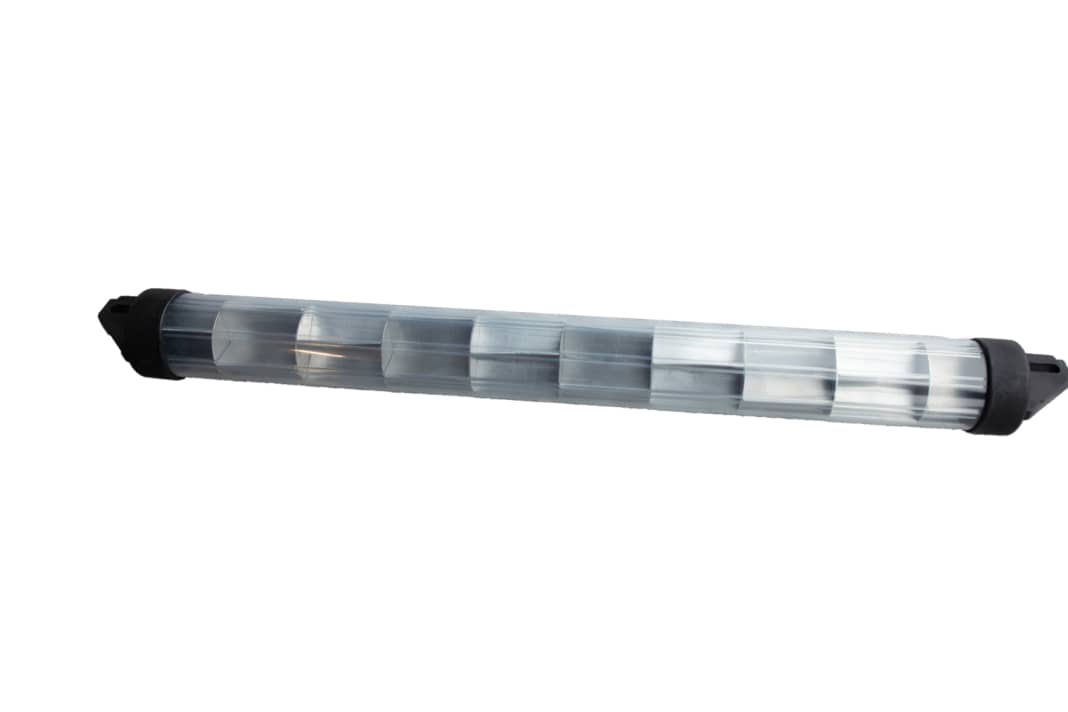
At close range, the Plastimo tube is reasonably visible, but the echoes are visibly weaker compared to the Mobri tube. At greater distances, an echo is only recognisable in a vertical position and on the semiconductor radar. The tube therefore reacts sensitively to heeling. Some of the aluminium plates inside are severely bent and not aligned at right angles. Lightest reflector in the test field.
- Weight: 0.25 kg
- Reflective surface, total. 2,0 m²
- Price. 36,53 €
- Dimensions: 50 x 580 mm
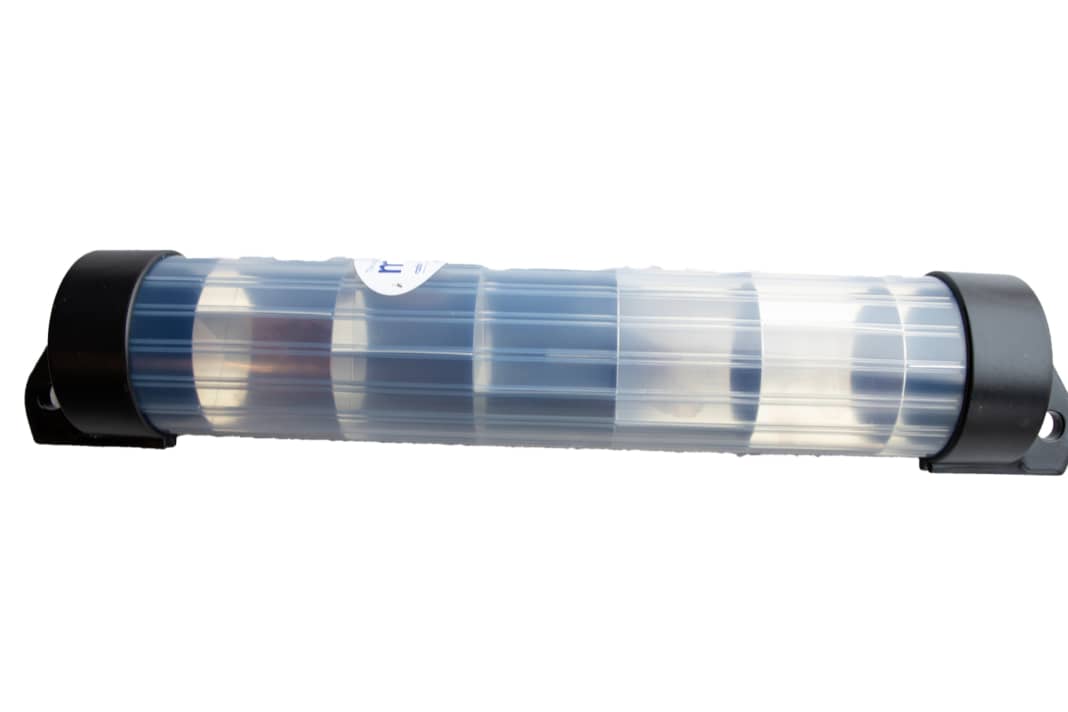
Same picture as its little brother: no visibility at a distance of 1.5 nautical miles. Only the magnetron radar in vertical position shows a slight echo. However, the Mobri is clearly visible at close range. The twice as large reflective surface compared to the smaller version does not result in a better echo. The extra weight and price are therefore not worth it. Also available with base.
- Weight: 0.88 kg
- Reflective surface, total: 4.0 m²
- Price: € 95 (as of 8/2022)
- Dimensions: 100 x 590 mm
Plastimo pipe large
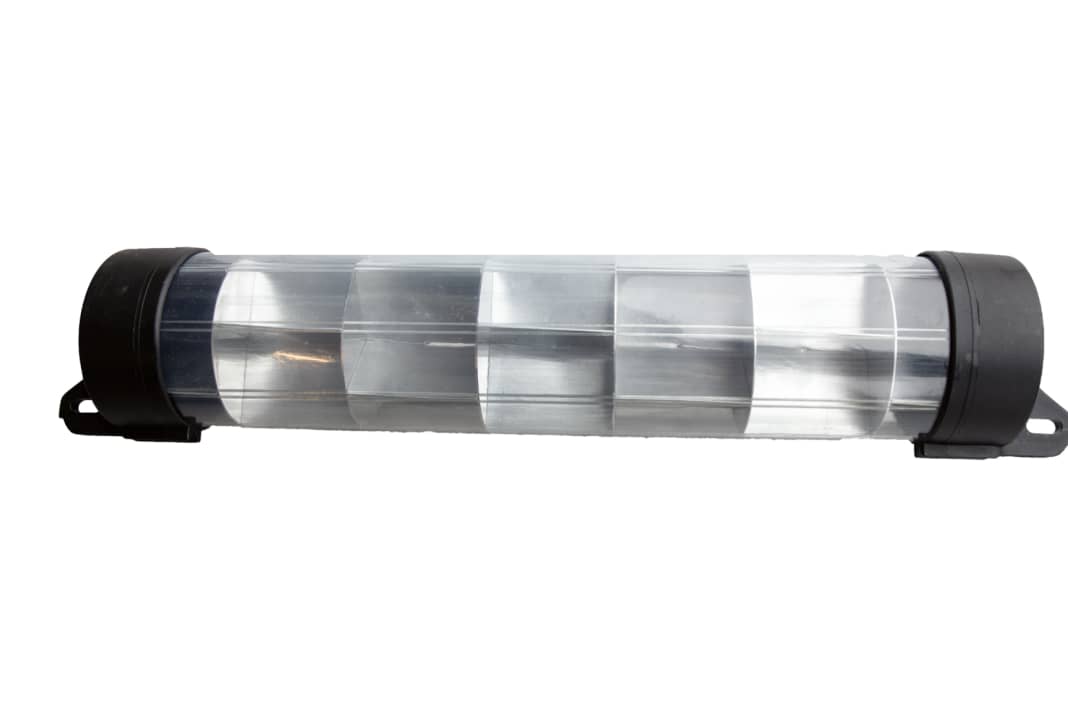
The same picture as with the competitors in tube form: At short distances, the image is usually good, although very small echoes occur with magnetron radar; at greater distances, they are almost completely invisible. Here too, the larger reflective surface does not result in a better echo. The aluminium plates inside are also bent and not mounted at right angles. The workmanship does not look very high quality due to the burrs on the plastic.
- Weight: 0.90 kg
- Price: 62,83 €
Echomax 230 BR
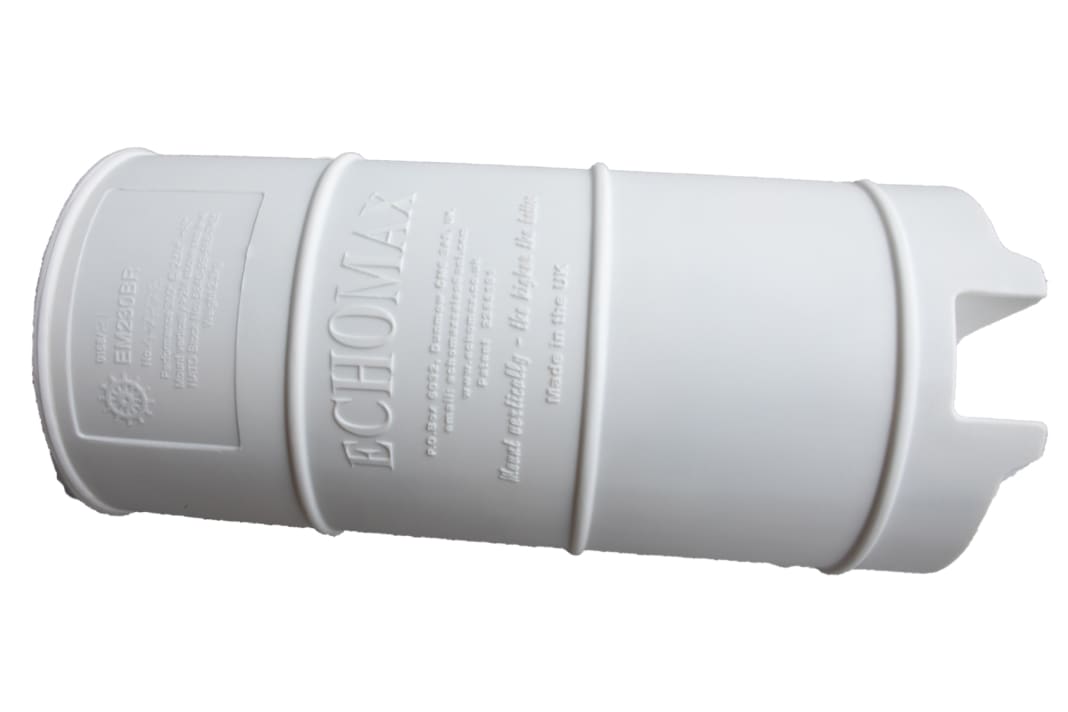
The very large device is the only reflector that produces an echo under all conditions and regardless of the radar technology. However, these are sometimes rather weak, especially if the reflector is tilted. If the reflector is upright, very good echoes are consistently displayed. The Echomax is very large and heavy, the required mounting bracket costs extra, but is very solid. Rather for large ships.
- Weight: 2.5 kg
- Reflective surface, total: 24 m²
- Price: 301,07 €
- Dimensions: 245 x 610 mm
- Evaluation: ****
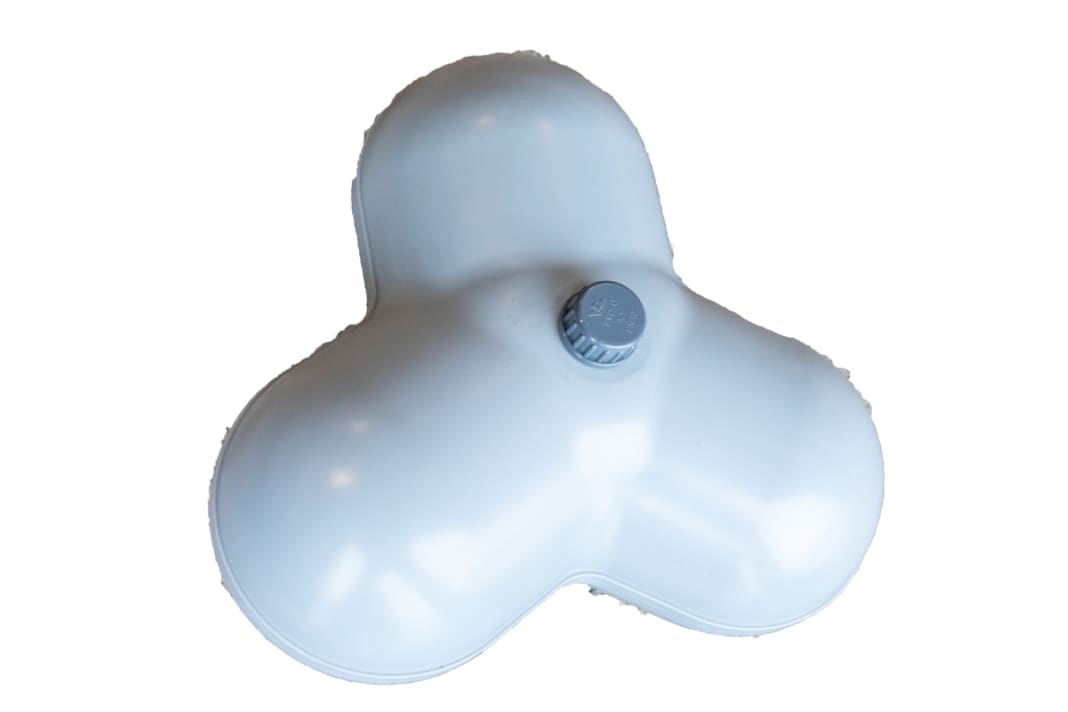
The 3Lenzz shows consistently good echoes at short distances. At greater distances, reliable echoes are only visible when the device is mounted vertically. If the device is tilted, a strong echo is only visible about every third round, but it is reliably visible in the same place. This is probably a consequence of the three-part design, see running text. The 3Lenzz is the most expensive and heaviest reflector in the test.
- Price: 389 €
- Distribution: Northwest radio
- Dimensions: 300 x 300 x 150 mm
Echomax EM230i
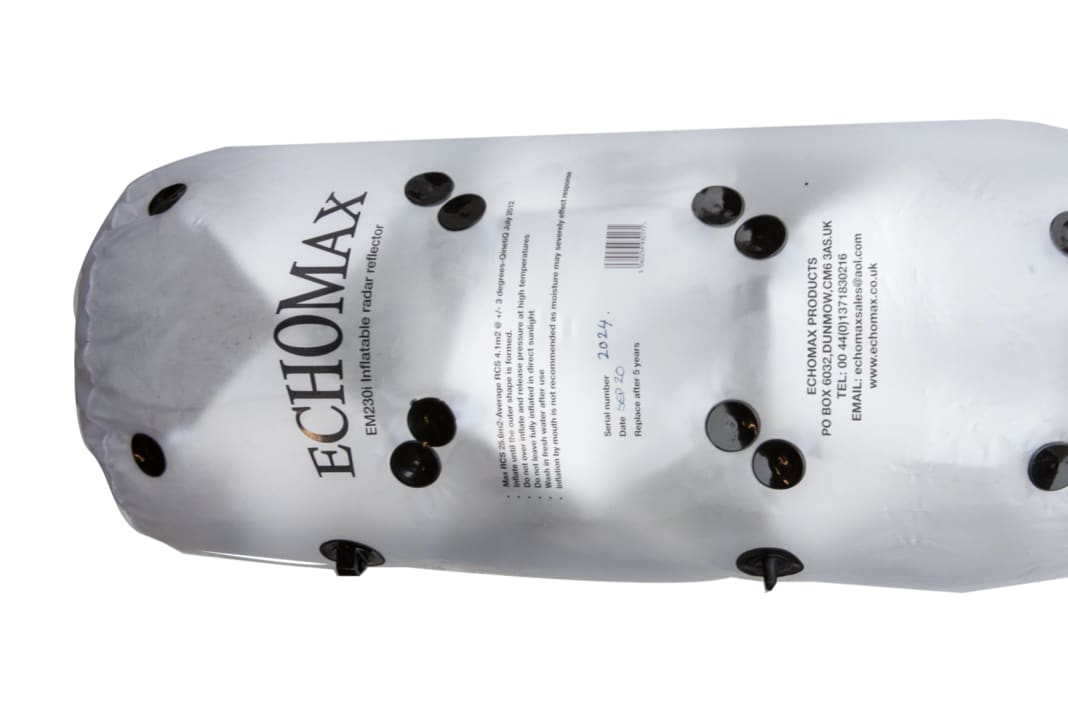
Very good and clear echoes throughout thanks to the large projection surface. Due to the suspended mounting, the reflector is always aligned vertically, so no curved values were measured. Due to its low weight, it is the ideal addition for small cruisers who only want to use the reflector when necessary. As with the ball, we recommend replacing the reflector after five years. However, it is very expensive in comparison.
- Weight: 0.42 kg
- Reflective surface, total: 17 m²
- Price: 296 €
- Dimensions: 300 x 750 mm
Plastimo inflatable
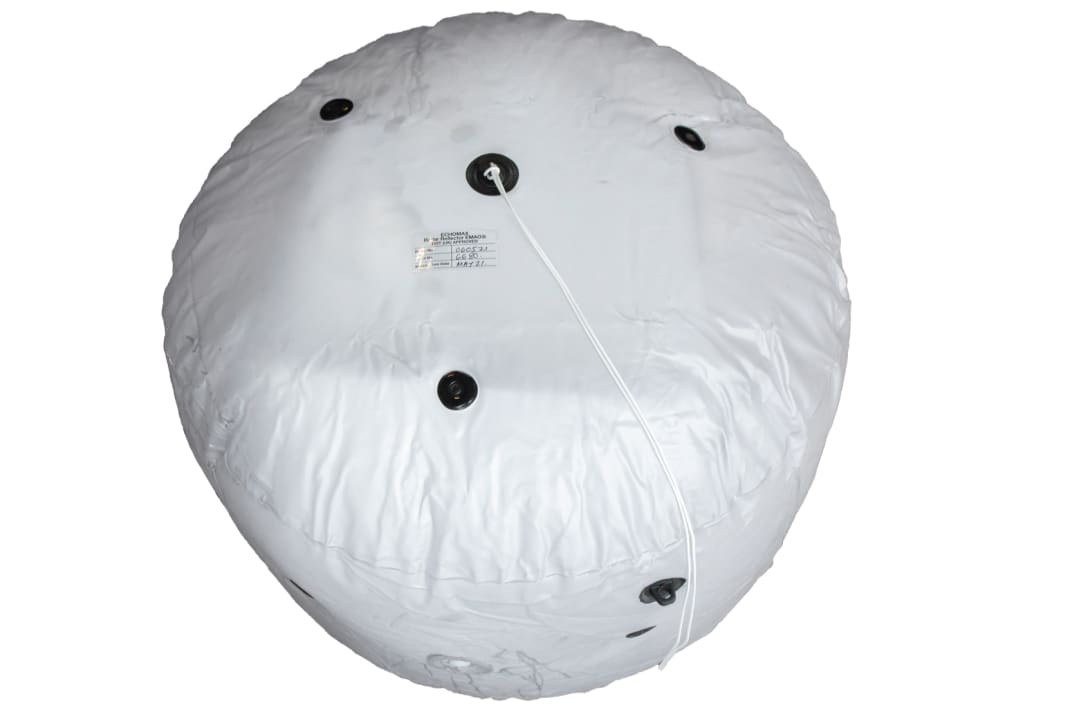
Good visibility at short distances, barely visible at greater distances. As the ball always hangs vertically when it is hoisted on a flag halyard, for example, there were no measurements when tilted. Rather poor echoes despite the comparatively large reflective surface. Unfortunately, the ball was leaking, so that constant re-inflation was necessary. The reflector is very large and light when inflated. Expensive.
- Weight: 0.6 kg
- Reflective surface: 10 m²
- Price: 268,94 €
- Dimensions: 615 mm
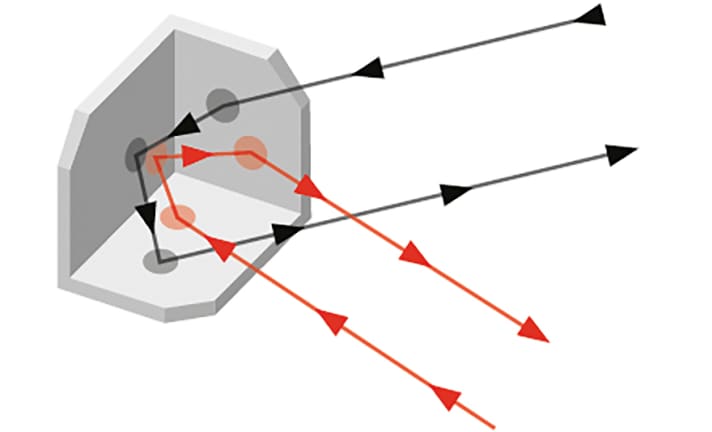
It used to be like this: after the radar unit was switched on, it took quite a while for the first image to be taken. This was because the electron beam tube, the magnetron, had to heat up first. This took time and required a lot of energy. Operating the devices also swallowed up a lot of electricity. So, on long patrols in areas with little traffic, it was only allowed to carry out a sweep every few minutes. If nothing was seen, the device switched back to stand-by mode and only used the energy required to keep the tube at the right temperature.
Modern radar devices solve this differently. There, it is not tubes that generate the signal, but semiconductors. They can also generate signals of different wavelengths. As a result, the radar is available as soon as it is switched on and requires much less power. In addition, the radiation is significantly lower, which is good for the health of the people on board. A broadband or semiconductor radar generates roughly the same radiation as a smartphone. Due to the different wavelengths, the radar can generate even more information from the reflected signals. So-called Doppler radars quickly recognise whether an echo is approaching or moving away and in which direction it is doing so without the need for complex plotting. This makes it possible to calculate the point of closest approach and the time until then.
Most read in category Equipment

When it comes to marine safety, technology can make a huge difference. A traditional issue in boating is the visibility of small crafts when they cross the course of larger vessels, as they do not show up on the radar. Radar reflectors are devices designed to overcome the problem and make small boats visible on displays. In low visibility conditions, these accessories are game-changers for tiny boats. As the name suggests, they reflect the energy emitted by radars back to the source, amplifying the signal and making small vessels show up on the screen. One of the leading companies implementing this technology is Echomax.
Founded in 1998, the brand offered a revolutionary design based on a symmetrical three-stack twelve-corner array. In addition to manufacturing reflectors for lots of pleasure and fishing boats, the company cooperates with many harbor authorities worldwide and leading producers of buoys. The brand's catalog includes passive and active radar reflectors, buoy radar enhancers, and relative accessories and mounts. On our virtual shelves, you can find a broad selection of Echomax radar parts, kits, and accessories designed to meet the current marine safety regulations.
- Election 2024
- Entertainment
- Newsletters
- Photography
- Personal Finance
- AP Investigations
- AP Buyline Personal Finance
- AP Buyline Shopping
- Press Releases
- Israel-Hamas War
- Russia-Ukraine War
- Global elections
- Asia Pacific
- Latin America
- Middle East
- Election Results
- Delegate Tracker
- AP & Elections
- Auto Racing
- 2024 Paris Olympic Games
- Movie reviews
- Book reviews
- Financial Markets
- Business Highlights
- Financial wellness
- Artificial Intelligence
- Social Media
Dali cargo ship leaves Baltimore for Virginia, nearly 3 months after bridge collapse
This image provided by the U.S. Coast Guard shows the U.S. Coast Guard Cutter Sailfish, an 87-foot Marine Protector class vessel, as it prepares to escort the Motor Vessel Dali during its transit from the Port of Baltimore to the Port of Virginia, Monday, June 24, 2024. (Petty Officer 3rd Class Christopher Bokum/U.S. Coast Guard via AP)
- Copy Link copied
The container ship Dali approaches the Chesapeake Bay Bridge, Monday, June 24, 2024, on its way to Norfolk, Va., as a man fishes at Sandy Point State Park. Ninety days ago the ship hit a support pier of the bridge causing a catastrophic collapse. (Jerry Jackson/The Baltimore Sun via AP)
The container ship Dali pulls away from the Seagirt Marine Terminal on its way to Norfolk, Monday, June 24, 2024, nearly three months after the ship hit a support pier of the Francis Scott Key Bridge causing a catastrophic collapse. (Jerry Jackson/The Baltimore Sun via AP)
The cargo ship Dali headed out of Baltimore for Virginia on Monday, nearly three months after it lost power and crashed into one of the Francis Scott Key bridge’s supporting columns and caused the bridge to collapse.
The 984-foot Dali started moving shortly before 8:30 a.m. with four tugboats.
The Dali was sailing under its own power with a full crew of 22 and six salvage experts, the U.S. Coast Guard said in a news release.
The Coast Guard is overseeing the voyage and providing a 500-yard safety zone around the Dali during its trip.
The Dali is scheduled to go directly to Virginia International Gateway to have roughly 1,500 cargo containers off-loaded to reduce draft, the Coast Guard said. The vessel is then scheduled to travel further to Norfolk International Terminal, where it is scheduled to undergo continued salvage and repairs from damage caused during the bridge collapse.
Shortly after leaving the Port of Baltimore early on March 26 , the ship lost power and propulsion and crashed into one of the bridge’s supporting columns, killing six construction workers.
On May 20, the Dali was refloated and guided back to port. The vessel had been stuck amid the wreckage for almost two months, with a massive steel truss draped across its damaged bow.
The collapsed Francis Scott Key Bridge rests on the container ship Dali, May 12, 2024, in Baltimore, as seen from Riviera Beach, Md. (AP Photo/Mark Schiefelbein, File)
A National Transportation Safety Board investigation found the ship experienced two power outages in the hours before it left the Port of Baltimore. In the moments before the bridge collapsed, it lost power again and veered off course. The agency is still investigating what caused the electrical failures.
In an update to its May investigative report, the NTSB said Monday that investigators have completed in-person interviews with the Dali’s crew.
AP AUDIO: Dali cargo ship leaves Baltimore for Virginia, nearly 3 months after bridge collapse
AP correspondent Rita Foley reports a cargo ship is moving again, months after it hit a bridge in Maryland.
The update noted that investigators have removed an electrical component known as a terminal block, as well as two portions of control wiring associated with the terminal block.
“We continue to examine the removed components at the NTSB Materials Laboratory,” the board said. “We will continue to evaluate the design and operation of the vessel’s electrical power distribution system, and investigate all aspects of the accident to determine the probable cause and identify potential safety recommendations.”
Last week, under an agreement confirmed by a federal judge, some members of the Dali’s crew were allowed to return home. Of the 10 allowed to leave, eight have done so, said Darrell Wilson, a spokesperson for ship manager Synergy Marine. The roughly two dozen total seafarers hail from India and Sri Lanka.
Under the agreement, the crew members who return home must be available for depositions.
Thousands of longshoremen, truckers and small business owners have seen their jobs impacted by the collapse, prompting local and state officials to prioritize reopening the port and restoring its traffic to normal capacity in hopes of easing the economic ripple effects .
Earlier this month, officials announced the reopening of the Fort McHenry federal channel, after clearing wreckage from the 700-foot-wide by 50-foot deep channel.
Monday also was the submission deadline in Maryland for proposals to rebuild the bridge. Procurement regulations prohibit the state from providing information about the proposals until the contract award is made and the state announces the design-build team. The state estimates the award and announcement sometime in mid- to late summer.
Officials have said they hope to rebuild the bridge by 2028.
Around the Globe
Hurricane tracker.
Severe Weather
Radar & Maps
News & features, winter center.
Saratov Weather Conditions See more
Top Stories
At least 2 dead from Midwest flooding, Minnesota dam close to failure
17 hours ago

Flooding, rounds of severe weather to persist in central US

Couple escapes death after lightning strike knocks them off their feet

Midweek severe storms to trim heat, humidity in Northeast
15 hours ago

Weather News
At least 8 still missing in New Mexico wildfires as residents return
23 hours ago

Featured Stories
US health agencies launch new studies of H5N1 bird flu
21 hours ago

Why Mount Rainier is the US volcano keeping scientists up at night

Missing hiker survived in California mountains by drinking water

3 tourists die after drowning in rip current at Panama City Beach

China issues top rainstorm alert as deadly flooding moves north

We have updated our Privacy Policy and Cookie Policy .
Get AccuWeather alerts as they happen with our browser notifications.
Notifications Enabled
Thanks! We’ll keep you informed.

Please verify you are a human
Access to this page has been denied because we believe you are using automation tools to browse the website.
This may happen as a result of the following:
- Javascript is disabled or blocked by an extension (ad blockers for example)
- Your browser does not support cookies
Please make sure that Javascript and cookies are enabled on your browser and that you are not blocking them from loading.
Reference ID: 0555a746-3479-11ef-b302-907bb7d7d1c4
Powered by PerimeterX , Inc.

IMAGES
VIDEO
COMMENTS
Download their full Radar Reflectors Report. 1995 Tests. West Marine tested radar reflectors in 1995, lead by Chuck Hawley along with experts Stan Honey, Dick Honey and Jim Corenman. Although 1995 was a long time ago, the tests are still relevant and interesting, because just about all of the products and technology are unchanged. Download the ...
The Radar reflector is one element of the measures boat owners should take to ensure that they can see other marine traffic and most importantly be seen by other marine traffic. It is clear from the Qinetic report on radar reflectors following the tragic loss of the yacht Ouzo south of the Isle of Wight on the 20/21 August 2006 that boat owners ...
How well does your radar reflector work? Dennis O'Neill. August 23, 2012. 0 shares. Yachting Monthly finds out. We looked at 10 radar reflectors - from £15 and £499 - testing them in a lab and at sea. The results, as Toby Hodges discovered, were startling. Click here to download the article. Yachting Monthly tests 10 radar reflectors.
Marine radar reflectors are ingeniously designed with intersecting metal planes that form specific geometric shapes. These shapes are engineered to create strong radar echoes, effectively increasing a boat's radar cross-section. This enhanced visibility is vital for safety, particularly in low-visibility conditions or areas with heavy maritime ...
If you need assistance with what type of radar reflector you need or finding a specific one, contact our customer service representatives during business hours at 1-860-701-3400 or 1-800-628-8225. Shop Radar Reflectors for boats of all types at Defender. Get fast delivery and free shipping on eligible orders over $99.
Radar can be used day or night, during clear or foggy conditions. But it has limitations; the most important of which is that the radar signal has to bounce off of something in order to register on the display. This is where a radar reflector comes in. This device is a multi-faceted array made of metal that is meant to be positioned on a boat ...
Essentially this means that if it is possible to use a radar reflector on your boat you should do so, but you should also be aware of the limitations of some of the radar reflectors currently available to you. X band and S band. Marine radars operate in two bands, the X band (9410 MHz ± 30 MHz) and the S band (3050 MHz ± 30 MHz).
The International Standard for Marine Radar Reflectors (ISO 8729) was revised in 1997 and came two years after our 1995 test. In addition to the section 5.1.1 noted above, there are other relevant sections. 5.1.2 requires that a reflector's azimuthal polar diagram "shall be such that its response over a total of 240 is not less than 2.5 m2.
The Maritime and Coastguard Agency (MCA) has updated its guidance on the use of a radar reflector on boats less than 15m/49.2ft and under 150 gross tonnage.. Marine Guidance Notice (MGN) 349 states that a radar reflector or radar target enhancer should be permanently installed, and offer the largest radar cross section (RCS) as practical for the vessel.
Shop boat radar reflectors at West Marine including tubular reflectors, Echomaster reflectors and more. Get free shipping to home or in-store! 6LchHDMbAAAAAGPRKfV4mVX9FPM_gdroO62T7nWA. Enter Zip Code
For a radar dead abeam, the elevation angle is your vessel's angle of heel; for a radar dead ahead or astern, the elevation angle is your vessel's pitch angle. A complete characterization of a radar reflector includes the RCS at all bearing angles, or azimuths from 0° to 360° and all elevations angles from -90° to +90° - although a ...
Let us know what you think. Echomaster™ Radar ReflectorGive ships a chance to see you in fog and low visibility. This model provides 12 square meters of radar cross section. Ranked on of the best radar reflectors and rated superior by SRI after the most rigorous tests ever conducted on radar reflectors - some costing 10 times as much.All our ...
Marine Radar Reflectors for Your Boat. As boating becomes increasingly popular, radar reflectors have emerged as an essential element of marine safety. These reflectors enhance the visibility of small boats, allowing larger ships to detect them via radar navigation and collision avoidance systems. This article will explore SOLAS Chapter V ...
The radar reflector type SR6 is a passive radar reflector for use on buoys and beacons. Special features of this radar reflector are its 6-corner reflector plates in speckle design with optimised reflection properties. ... JULIUS MARINE GmbH Industriestr. 15 18069 Rostock Germany. If you have any questions or you would like to place an order ...
The radar unit then analyses both the propagation time and the reception strength of the signals and displays the result as an echo on the screen. The more of the originally emitted signals are received, the larger the echo is displayed on the screen. However, movements of both the radar unit and the reflector can dilute this effect.
Echomax® Mast Mount Brackets for EM180 Radar Reflector, Pair (EM180MBM) 0. $94.25. Echomax® Mast Mount Brackets for EM230 Radar Reflector, Pair (EM230MBM) 0. $214.44. Echomax® Mast Mount Brackets for EM305 Radar Reflector, Pair (EM305MBM) 0. $202.59.
C$36.95 Excl. tax. Article code: 154750. SKU: 154750. Out of stock. Out of stock. Login for wishlist. Description. Share. This radar reflector increases the radar return making your boat more visible This 14" tube style reflector includes a mounting base and is most popular for power boat mounting.
The cargo ship Dali headed out of Baltimore for Virginia on Monday, nearly three months after it lost power and crashed into one of the Francis Scott Key bridge's supporting columns and caused the bridge to collapse.. The 984-foot Dali started moving shortly before 8:30 a.m. with four tugboats.
Radar reflectors are very common on small vessels as these boats can fail to show up on large ships' radar screens. Davis Instruments' Echomaster Radar Reflectors are compact, lightweight, and can be quickly assembled or disassembled. All models can be stored flat when not in use. Plates are held together by tough, injection-molded corner ...
TENNESSEE RIVER/CUMBERLAND RIVER - JULY MARINE EVENTS/PLANNED RIVER CLOSURES MILE 279.2 - CHANNEL CONDITION USACE Louisville District Notice to Navigation 2024-001, 2024 scheduled lock outages. U.S. Coast Guard Marine Safety Detachment Nashville notice of marine events and planned river closures for July.
See our precise weather radar for Saratov Oblast. Live data Rain radar
Download scientific diagram | -Generalized stratigraphic section of the Rybushka Formation based on exposures at the Beloe Ozero locality, Saratov Oblast, Russia. from publication: Marine fishes ...
Get the Saratov weather forecast. Access hourly, 10 day and 15 day forecasts along with up to the minute reports and videos from AccuWeather.com
Description. Plastimo's vertically mounted Radar Reflector Tube is designed to complement your active radar reflector on your sailboat. Lightweight, compact tubular design offers almost no wind resistance and won't interfere with sails. Tubular shape minimizes windage and chafe on your boats gear. Features a groove for mounting it on a shroud.
Marine shes from the Upper Cretaceous of Rybushka Formation, Russia 383. but tapers apically to a sharp point. The mesial edge . of the main cusp is slightly convex, whereas the dis-